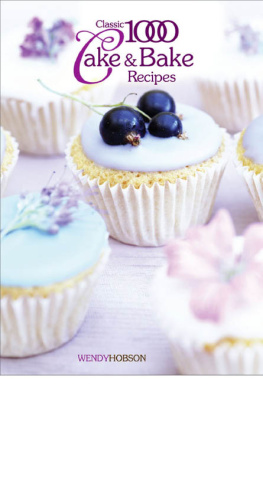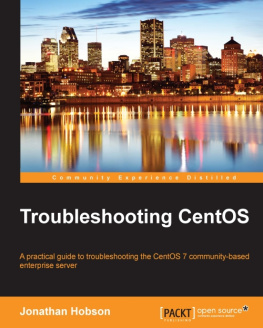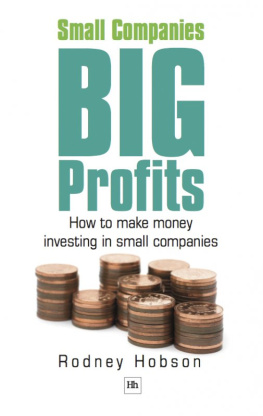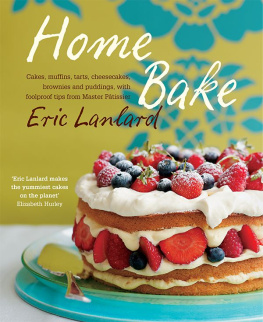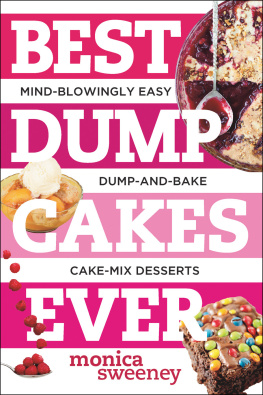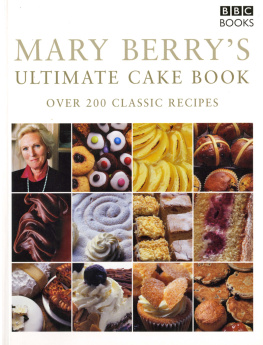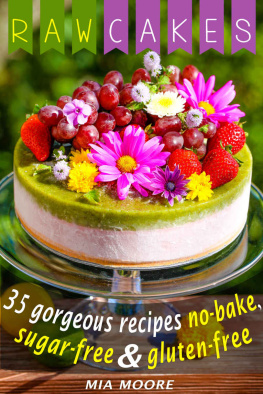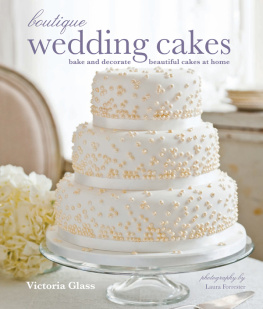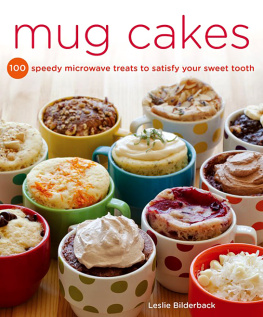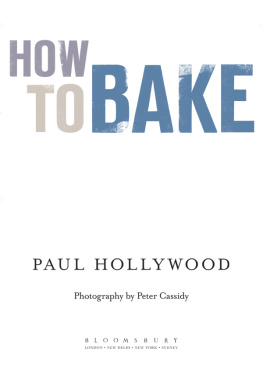Copyright
First published in Great Britain in 1998 by Strathearn Publishing Ltd Copyright 1998, 2002, 2006 Strathearn Publishing Ltd A CIP record for this book is available from the British Library The moral right of the author has been asserted All rights reserved Epub ISBN 9780572040703 Kindle ISBN 9780572040697 Print ISBN 9780572028039 The Copyright Act prohibits (subject to certain very limited exceptions) the making of copies of any copyright work or of a substantial part of such a work, including the making of copies by photocopying or similar process. Written permission to make a copy or copies must therefore normally be obtained from the publisher in advance. It is advisable also to consult the publisher if in any doubt as to the legality of any copyright which is to be undertaken. W. Foulsham & Co. Ltd Capital Point, 33 Bath Road Slough, Berkshire SL1 3UF, England www.foulsham.com
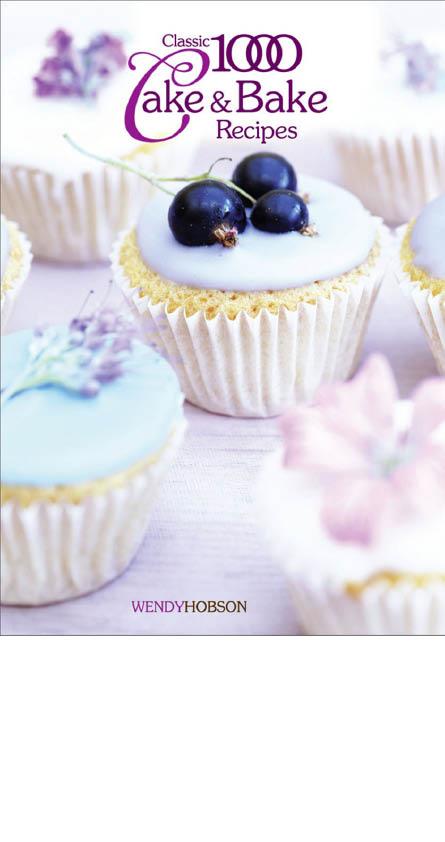
Introduction
This collection of recipes covers everything from crisp biscuits and small cakes to rich fruit cakes, gteaux and granary and herb breads.
It could be the only cookery book you will need to keep all your favourite cake and bake recipes to hand. The range is vast and you will find every taste catered for. The chapters are arranged so that you will find a suitable cake for the occasion simple to locate. If you need a quick cake to make for the children, turn to No-bake Cakes; if you are looking for a family favourite, try Teatime Favourites or everybodys favourite, Chocolate Cakes! And never be afraid to use your imagination, and whatever you have in the cupboard, if you fancy substituting ingredients to make your own unique recipes. So use the collection, find out your favourites and I hope you will enjoy them all!
Making Cakes
Equipment You do not need vast quantities of cake-making equipment, but it is worth buying the best quality you can afford as it will last longer and give better results.
- Scales, measuring jug and spoons.
- Mixing bowls.
- Wooden and metal spoons and spatula.
- Whisk.
- Sieve (strainer).
- Food processor and mixer (if possible).
- Rolling pin.
- Greaseproof (waxed) paper or non-stick baking parchment.
- Cake tins (pans).
- Scales, measuring jug and spoons.
- Mixing bowls.
- Wooden and metal spoons and spatula.
- Whisk.
- Sieve (strainer).
- Food processor and mixer (if possible).
- Rolling pin.
- Greaseproof (waxed) paper or non-stick baking parchment.
- Cake tins (pans).
The best are sturdy, black to conduct the heat, and those with loose bases make it easier to remove the cake. Remember to use a deep cake tin for sponge cakes otherwise the mixture will rise above the top of the tin and the cake will spoil.
- Bun tin (patty pan), muffin tin, loaf tins.
- Baking sheet.
- Microwave containers
- Wire cooling rack.
- Sharp serrated knife and palette knife.
- Airtight tins.
Ingredients - Use your discretion in substituting ingredients and personalising the recipes. Make notes of particular successes as you go along.
- Eggs are medium unless otherwise specified.
- Always wash fresh produce before preparing it. Peel and scrub ingredients as appropriate to the recipe. For example, carrots can be washed, scrubbed or peeled, depending on whether they are young or old.
- The use of spices, such as cinnamon and nutmeg, is a matter of personal taste. Taste the food, where appropriate, as you cook and adjust the seasoning to suit your taste.
- You can use fresh or dried herbs in most recipes, but where fresh herbs are specified only use half the amount of dried.
Do not use dried herbs for garnishing or adding at the end of a recipe.
- Two leaves of gelatine are equivalent to 5 ml/1 tsp of powdered gelatine.
- Use whichever type of butter or margarine you prefer. Some margarines state on the packet the uses for which they are most suitable. If the recipe indicates that the butter or margarine should be softened, make sure you have butter at room temperature; soft margarines can be used straight from the fridge.
- You can use fresh, dried or easy-blend dried yeast for bread and yeast-cake recipes. 15 g/ oz of fresh yeast is equivalent to 20 ml/4 tsp of dried yeast. Dried yeast will take slightly longer to dissolve than fresh yeast. If you are using fresh yeast, you can mix it into the flour once dissolved without waiting for the recommended 20 or so minutes.
If you are using easy-blend yeast, simply mix it with the dry ingredients, then add the warm liquid and knead to a dough. The ideal temperature for water to be added to yeast or dough is hand-hot or 38C/100F.
Preparation and Cooking - Use either metric, imperial or American measures; never swap from one to another.
- Spoon measurements are level: 1 tsp = 5 ml; 1 tbsp = 15 ml.
- Use whatever kitchen gadgets you like to speed up the preparation times: mixers for whisking, food processors for grating, slicing, mixing or kneading, blenders for liquidising.
- Approximate sizes are given for baking tins (pans) but use your discretion in selecting the right one for a particular recipe. For example, if a 23 cm/9 in square tin is recommended, you can successfully use a 30 x 18 cm/12 x 7 in tin instead. In general, a square measurement has been given in most recipes as it is much easier to assess a suitable size.
- Cake and bread weights are approximate.
- Cake tins (pans) are round unless otherwise specified.
- Lining cake tins makes it easier to remove the cake from the tin without it breaking. You can use re-usable silicon sheets or greaseproof (waxed) paper. To line a circular tin, draw round the base of the tin on to the paper and cut out to fit the base.
Cut a strip long enough to fit round the inside of the tin and about 2.5 cm/1 in taller than the tin. Fold up 1 cm/ in along the bottom edge of the strip and snip up to the fold at regular intervals. Press into the greased tin so that the fold is on the base of the tin and the snipped strip is on the base. Place the base circle on top. To line a loaf tin (pan), or a square or rectangular tin, cut a rectangle of paper large enough to fit the tin and stand the tin on top. Fold up the edges so that it fits the tin.
Cut away four rectangles from the corners of the paper, then shape the cross-shaped piece of paper into the greased tin.
- All ovens vary so cooking times have to be approximate. If you are using a fan oven, refer to the manufacturers instructions on recommended cooking times and temperatures as both are likely to be reduced.
- There are several ways to test whether a cake is done, depending on the type of cake: the top will be golden brown; the cake will start shrinking from the sides of the tin; a sponge-type cake should spring back if pressed gently with a fingertip; a thin skewer inserted in the centre of a fruit cake will come out clean.
- Cakes and biscuits should generally be removed from the baking tin once cooked. Gently peel off any lining paper and cool on a wire rack. This has not been listed in every recipe. Where it is better to leave cakes in a tin to cool before removing them, this has been included.
- Leave dough to rise in a warm, but not hot, place for best results. If you want the dough to rise more slowly, leave it in a cooler place.
- When bread is cooked, it should be firm and golden brown.
Using oven gloves, take it carefully out of the tin and tap it on the base. It will sound hollow if it is cooked. If not, return it to the tin and the oven for a further 5 minutes, then test again.

